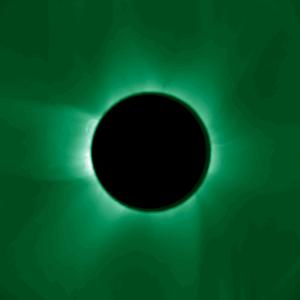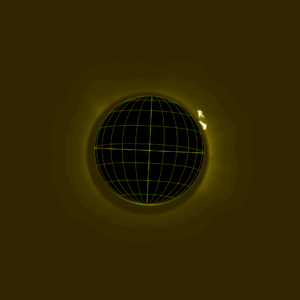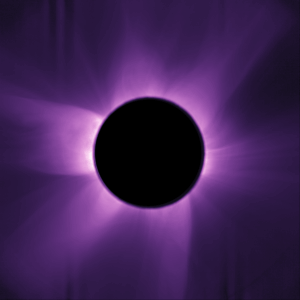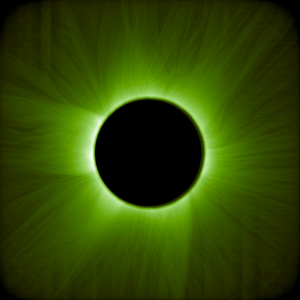Stoneshield Data Center
 About us
About us About us / section
About us / section Markets
Markets Markets / section
Markets / section Projects
ProjectsAEROSPACE & DEFENSE
ENERGY
MOBILITY
More results
 Careers
Careers Careers / section
Careers / sectionThe images confirm the capabilities of high-precision formation flying between two satellites—a technological milestone that could shape the future of space exploration.
Proba-3 is a mission developed by the European Space Agency (ESA) in collaboration with an industrial consortium led by Sener, comprising over 29 companies from 17 countries.
With these unprecedented images, Proba-3 joins the family of missions providing the scientific community with valuable data on the solar corona— a fascinating region that gives rise to the solar wind and, consequently, to magnetic phenomena that affect technology and communications on Earth.
The European Space Agency’s (ESA) Proba-3 mission has achieved a historic milestone by capturing the first-ever images of the Sun’s corona (the outermost layer of the Sun, composed of plasma) by creating an artificial eclipse from space. This is an unprecedented technological challenge that required perfect coordination and synchronisation between the mission’s two satellites.
It also marks a major achievement for Spain’s aerospace industry, as the mission is led by Spain through Sener, the mission’s prime contractor and responsible for both the flight and ground segments. Spanish industry involvement also includes Airbus Defence and Space and GMV (both part of the core team), as well as Airbus Crisa, Thales España and Deimos. Two Belgian companies, Redwire and Spacebel, round out the core industrial team. In total, the mission brings together over 29 companies from 17 countries.
This is also the first mission to demonstrate the viability of high-precision formation flying technology, developed almost entirely in Spain—an achievement of major technological significance, as highlighted by ESA in its announcement of the milestone. Formation flying paves the way for future large-scale space missions to be carried out more cost-effectively by using multiple small modules that operate in flight as a single large satellite.
These images were captured using a completely innovative approach: by creating an artificial solar eclipse from space, generated through the precise interaction and synchronisation of the mission’s two satellites—the Coronagraph and the Occulter.
The Coronagraph satellite houses the mission’s main scientific instrument—the coronagraph. Using optical sensors (camera system), lasers, highly precise cold gas propulsion actuators (1 mN), and innovative navigation and control algorithms, the formation flying technology allows the second satellite—the Occulter, equipped with a 140 cm circular disc—to be positioned between the Sun and its companion, at a distance of approximately 150 metres. It casts its shadow with sub-millimetre precision directly in front of the coronagraph’s optics. The result is a perfectly aligned image of the solar corona.
The two satellites maintain perfect synchrony in this observation position for a period of six hours at the apogee of an elliptical orbit that reaches just over 60,000 km from Earth (about ten times the distance from the surface to the Earth’s core), in an orbit lasting just under one Earth day.
Each orbit requires a series of complex operations to be performed completely autonomously, without human intervention. At the lower part of the orbit, both satellites fly freely and apart. As they approach the apogee zone, and fully autonomously, coordinating through a specific communication system, the two spacecraft orient themselves towards each other and position at the observation distance that guarantees a high-quality artificial solar eclipse, remaining separated by nearly 150 metres.
To do this, the system gradually acquires data from the mission’s various sensors (first the camera, then the laser, and finally a shadow-measuring system located directly on the coronagraph) and ensures that the relative position and velocity between the two satellites converge within the required limits to carry out scientific observations. The satellites remain at this distance throughout the apogee arc with a stability reaching below one millimetre. This achievement provides the coronagraph with a vast observation window that is highly valued by scientists. After this period, upon exiting the apogee arc, the satellites ‘break formation’, beginning a new orbital cycle.
The images generated by Proba-3’s coronagraph serve a highly interesting scientific purpose: these prolonged, on-demand views of the atmosphere surrounding the Sun will make it possible to study an area considered to be the source of solar wind, and consequently, of magnetic phenomena that impact technology and communications on Earth. Proba-3 creates a solar eclipse between its two satellites so that only the photosphere is visible — the layer that holds the secrets of the most relevant surface phenomena: sunspots, granulation, vortices, eruptions, and solar ejections, all essentially magnetic in origin, releasing plasma and abundant radiation of various types. Monitoring and understanding these phenomena is essential due to their impact on life and human activity on Earth.
Proba-3 is part of ESA’s General Support Technology Programme, and Spain’s involvement was made possible thanks to the backing of the Centre for the Development of Industrial Technology (CDTI) and, more recently, the Spanish Space Agency. This was also greatly aided by close collaboration between companies internationally.

The Sun’s inner corona, coloured artificially to appear dark green, in an image taken on 23 May 2025 by the ASPIICS coronagraph aboard Proba-3. The ASPIICS instrument captures the solar corona in two different ‘spectral lines’, each line corresponding to a different element contained in the coronal gases. This image shows observations in the coronal green line – a spectral line emitted by iron atoms that lost half of their electrons due to extremely high temperatures. This allows us to see the hottest contents of the corona, at up to 2 million degrees. On the upper left side, a hot loop can be seen extending from the Sun’s surface into the corona, a structure which generally appears following a solar flare. © ESA/Proba-3/ASPIICS

The Sun’s inner corona appears faint yellow in this image taken on 25 March 2025 by the ASPIICS coronagraph aboard Proba-3. The ASPIICS instrument captures the solar corona in two different ‘spectral lines’, each line corresponding to a different element contained in the coronal gases. This image, captured in the spectral line emitted by helium atoms, shows the solar corona similarly to how a human eye would see it during an eclipse through a yellow filter. A grid shows the true position of the Sun behind the mission’s occulter, slightly off-centre. This image was acquired while the ASPIICS instrument was off-pointed, bringing the bright disc of the Sun as close as possible to the occulter’s edge. Even in this position, ASPIICS was able to make detailed observations, as demonstrated by a cloud of cold plasma visible in the top right. Andrei Zhukov, ASPIICS Principal Investigator, explains: “The corona is extremely hot, about two hundred times hotter than the solar surface itself. Sometimes, clouds of relatively cold plasma are observed near the Sun – although these are still around 10 000 degrees, they are much colder than the surrounding million-degree hot plasma – creating what we call ‘a prominence’. We are very happy to have been able to capture one such structure in one of the first ASPIICS images.” © ESA/Proba-3/ASPIICS

The Sun’s inner corona, coloured artificially to appear violet, in an image taken on 23 May 2025 by the ASPIICS coronagraph aboard Proba-3. This image shows the corona in polarised white light, captured using a special technique which allows scientists to separate the hot corona’s polarized light from the light scattered by interplanetary dust. © ESA/Proba-3/ASPIICS

The Sun’s inner corona appears greenish in this image taken on 23 May 2025 by the ASPIICS coronagraph aboard Proba-3. This image, captured in the visible light spectrum, shows the solar corona similarly to how a human eye would see it during an eclipse through a green filter. The hair-like structures were revealed using a specialised image processing algorithm. © ESA/Proba-3/ASPIICS/WOW algorithm